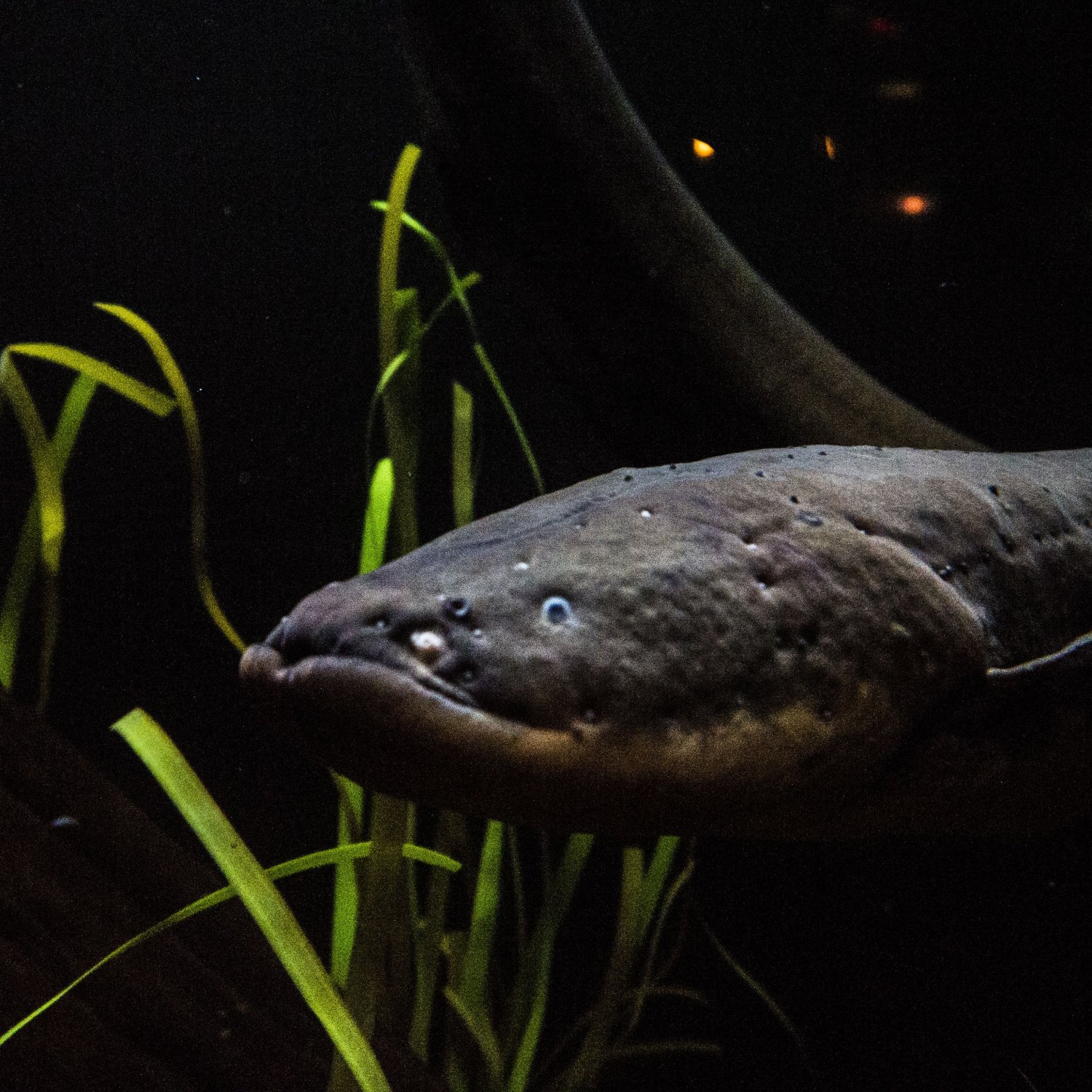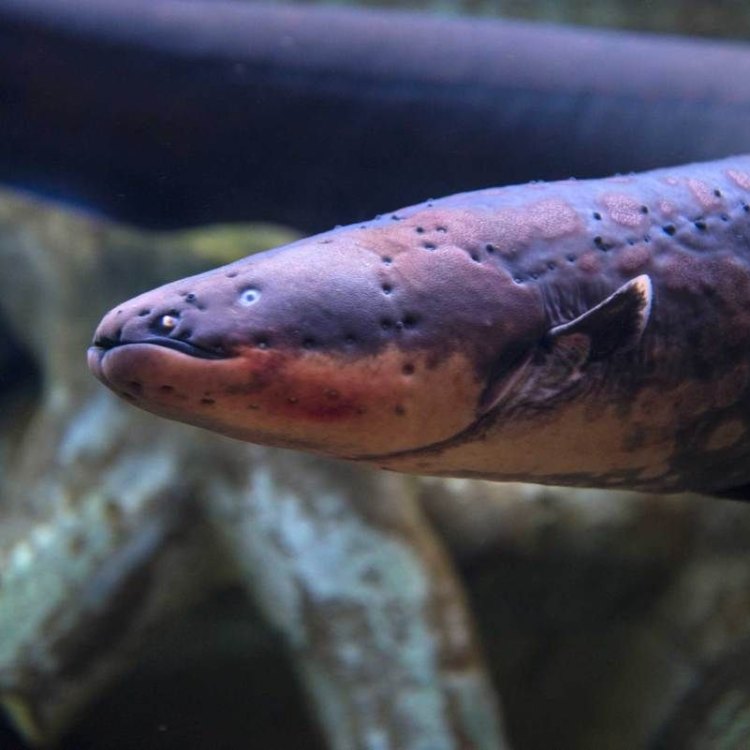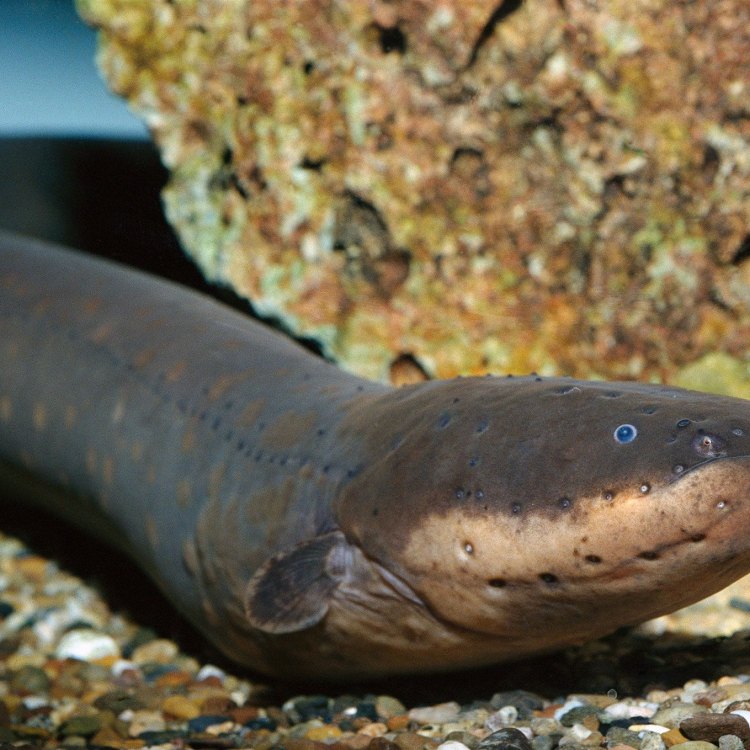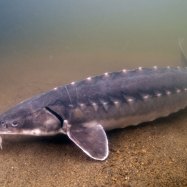
Electric Eel
6 to 8 feet
The electric eel, found in the Amazon and Orinoco river basins, is not actually an eel, but a type of fish. It can grow up to 8 feet and has a unique ability to produce electric shocks. It belongs to the Gymnotidae family and has an elongated, cylindrical body shape. Don't be fooled by its name, this animal is not to be underestimated!
Animal Details Summary:
Common Name: Electric Eel
Kingdom: Animalia
Habitat: Freshwater
The Shocking Truth About the Electric Eel: Nature's Bioelectric Marvel
The animal kingdom is full of fascinating creatures, each with their own unique and awe-inspiring abilities. One such creature is the electric eel, scientifically known as Electrophorus electricus. Found in the freshwater bodies of South America, this animal is a true wonder of nature. Its ability to produce powerful electric shocks has captivated scientists and intrigued people for centuries Electric Eel.In this article, we will dive into the world of the electric eel and uncover the secrets of this remarkable creature. From its physical characteristics to its amazing abilities, we will explore all aspects of this animal and learn why it is truly a marvel of nature.
Classification and Habitat
The electric eel is classified under the Animalia kingdom, Chordata phylum, and Actinopterygii class. It belongs to the Gymnotiformes order and Gymnotidae family. Its natural habitat is in the freshwater bodies of South America, particularly in the Amazon and Orinoco river basins.This animal's unique ability to produce electric shocks is directly related to its habitat. The freshwater rivers and streams of South America provide the perfect environment for the electric eel to thrive. With their elongated and cylindrical body shape, these eels are well-adapted for swimming and hunting in these waters.
Appearance and Physical Characteristics
The electric eel's appearance is nothing short of striking Ermine. It has a dark grey to black coloration on its back and sides, while the belly is usually yellowish or white. This coloration serves as camouflage, helping the eel to blend in with its surroundings while hunting for prey.One of the most notable physical characteristics of the electric eel is its size. On average, it can grow up to 6 to 8 feet in length, which is equivalent to the height of an average human. Its body shape is another unique feature, as it is elongated and cylindrical, allowing for efficient movement in the water.
Feeding and Hunting Habits
As a carnivorous animal, the electric eel mainly feeds on small fish, crustaceans, and invertebrates. It uses its electric shocks to stun and immobilize its prey. With specialized organs known as electric organs, the eel can generate powerful electric shocks of up to 600 volts. This is enough to incapacitate its prey and make it easier to catch.Interestingly, the electric eel has also been observed to use its electric shocks for hunting purposes. It can produce low-frequency electric fields to sense its surrounding environment, similar to the way bats use echolocation. This helps the eel to locate its prey even in muddy or dark waters, giving it an advantage while hunting.
The Shocking Truth About Electric Organs
Electric eels are unique in the sense that they are one of the only animals in the world that can generate electric shocks. And this is all thanks to their specialized electric organs.These electric organs make up about 80% of the eel's body, running through the entire length of its body. These organs are made up of electrocytes, specialized cells that can store and release electric charges. When the eel needs to generate a shock, these electrocytes work together to produce a high voltage electric discharge.
Aside from using their electric shocks for hunting, electric eels also have a defensive mechanism. When threatened, they can produce quick bursts of electricity, up to seven pulses per second, to discourage predators. Although these shocks are relatively weaker than their hunting shocks, they can still be painful and cause muscle spasms in humans.
The Eel's Electric Shock: Harmful or Helpful?
The electric eel's ability to generate electric shocks has long been a subject of fascination and fear. However, for centuries it has also been used by the indigenous people of South America for medicinal purposes.The minor shocks produced by the eel can help with various ailments, including rheumatism, headaches, and even spiritual cleansing. In Brazil, the shocks from electric eels are considered a remedy for asthma, and in Suriname, they are believed to cure migraines.
Aside from their medicinal use, electric eels have also inspired scientific advancements. Scientists study these creatures to better understand how the electric organs work and how their bodies generate and regulate electricity. This knowledge has paved the way for innovations in biotechnology and medical devices such as pacemakers and shock therapy machines.
Conservation and Threats
Despite their amazing abilities and unique features, electric eels are facing various threats and challenges that put them at risk of extinction. Habitat loss due to human development, pollution, and overfishing are some of the main factors affecting this species' population.As a freshwater species, the electric eel is highly dependent on the water quality of its habitat. Any pollution in the water, such as chemicals and waste from factories and agriculture, can have a detrimental effect on these creatures. Additionally, the destruction of freshwater bodies for human use and development also reduces the eel's living space.
Overfishing is another significant threat, as electric eels are often caught by fishermen as bycatch or targeted for their meat and oil. These practices have significantly reduced the population of electric eels, making them a vulnerable species.
The Future of Electric Eels
Electric eels are truly a remarkable species, with their unique abilities and fascinating features. However, as their numbers continue to decline, it is crucial for us to take action to protect and conserve these creatures. Governments and organizations should work together to regulate fishing practices, protect natural habitats, and reduce pollution in their environment.Moreover, we should also make an effort to understand these animals better and raise awareness about their importance in the ecosystem. With proper conservation efforts, we can ensure that electric eels will continue to thrive and stun us with their electrifying abilities for generations to come.
Conclusion
In conclusion, the electric eel is undoubtedly a marvel of nature. From its ability to generate powerful electric shocks to its vital role in the ecosystem, this animal is truly unique and fascinating. It is a reminder of the incredible diversity found in our natural world and the importance of preserving it.As we continue to learn more about the electric eel, we gain a better understanding of the intricate workings of nature and the incredible creatures that inhabit it. Let us work together to protect and conserve these animals and appreciate the beauty and wonder they bring to our world.

Electric Eel
Animal Details Electric Eel - Scientific Name: Electrophorus electricus
- Category: Animals E
- Scientific Name: Electrophorus electricus
- Common Name: Electric Eel
- Kingdom: Animalia
- Phylum: Chordata
- Class: Actinopterygii
- Order: Gymnotiformes
- Family: Gymnotidae
- Habitat: Freshwater
- Feeding Method: Carnivore
- Geographical Distribution: South America
- Country of Origin: Brazil
- Location: Amazon and Orinoco river basins
- Animal Coloration: Dark grey to black on the back and sides, yellowish or white on the belly
- Body Shape: Elongated and cylindrical
- Length: 6 to 8 feet

Electric Eel
- Adult Size: Up to 8 feet
- Average Lifespan: 10 to 15 years
- Reproduction: Sexual
- Reproductive Behavior: They migrate during breeding season
- Sound or Call: Produce low-frequency electric pulses, not audible to human ears
- Migration Pattern: Migratory
- Social Groups: Solitary
- Behavior: Nocturnal
- Threats: Habitat loss, pollution, overfishing
- Conservation Status: Not evaluated
- Impact on Ecosystem: Key ecosystem engineer
- Human Use: Used for scientific research and as an electric power source
- Distinctive Features: Can produce electric shocks, long body
- Interesting Facts: Electric eels have the ability to generate an electrical charge of up to 600 volts
- Predator: Large predatory fish and caimans

Electrophorus electricus
The Shocking Truth About Electric Eels: The Strongest Electric Animal on Earth
Electric eels are one of the most fascinating creatures on Earth, with their shocking abilities and unique features. Despite the name, electric eels are not actually eels but are a type of electric fish found in the freshwaters of South America. With an adult size of up to 8 feet, electric eels are the largest electric fish and the strongest animal that can produce electricity.These electrifying creatures may seem intimidating, but there's more to them than just their ability to shock and stun their prey PeaceOfAnimals.Com. In this article, we will explore the fascinating world of electric eels and learn about their behavior, threats, and impact on the ecosystem.
The Electric Eel's Physical Features
Electric eels (Electrophorus electricus) are elongated fish with slender bodies, a flattened head, and a long dorsal fin that runs along their entire back. They are typically dark gray or brown in color, with a yellow or orange belly.
One of the most distinctive features of electric eels is their long body, which can reach up to 8 feet in length. This makes them one of the largest freshwater fish in the world. They also have a unique respiratory system that allows them to take in oxygen from the air, unlike most other fish that rely on their gills for respiration.
But what truly sets electric eels apart from other fish is their ability to produce electric shocks. These electric organs are located on both sides of their body and make up approximately 80% of their body, giving them the nickname "the battery fish."
The Shocking Abilities of Electric Eels
While most electric eels can produce electric shocks of up to 600 volts, some have been recorded to generate bursts of nearly 860 volts – which is enough to stun and even kill their prey Egyptian Cobra. To put that into perspective, a standard household outlet delivers about 120 volts.
Electric eels use their electric abilities for hunting and self-defense. To hunt, the eel emits low-frequency electric pulses into the water, which can detect the movement of nearby prey. Once it finds a potential meal, the eel will release a stronger electric shock to paralyze its prey, making it easier to catch.
But electric eels also use their electric ability for self-defense. When threatened, they can release rapid and powerful electric shocks to deter predators, including large fish and even caimans.
Reproduction and Behavior
Electric eels are solitary creatures and can be found living alone in the shallow waters of South American rivers and streams. They are also primarily nocturnal, meaning they are more active at night and rest during the day.
During the breeding season, electric eels exhibit migratory behavior. They travel to shallow waters, often in search of a mate, and can migrate long distances. Researchers have found that electric eels may even migrate from one river basin to another.
Electric eels reproduce sexually, with males engaging in aggressive behavior to attract a female. Once the female lays her eggs, the male will guard them until they hatch, which usually takes around three to four months.
The Impact on the Ecosystem
Electric eels are considered key ecosystem engineers, meaning they play a vital role in shaping and maintaining their environment. As predators, they control the population of other aquatic animals, preventing one species from becoming too dominant in the ecosystem.
But it's not just their role as predators that makes electric eels important for their ecosystem. As they hunt and burrow into the sediment on the river floor, they also create small microhabitats for other aquatic animals to thrive in.
However, electric eels are facing threats that could potentially harm their population and have a ripple effect on the ecosystem. Habitat loss, pollution, and overfishing are some of the main threats electric eels face, with their habitat being destroyed for human development and their populations being affected by pollution and overfishing. Unfortunately, electric eels are currently not evaluated for their conservation status, leaving their population at risk.
Human Use
Throughout history, electric eels have fascinated humans, leading to their use in scientific research and even as an electric power source. Scientists have studied electric eels to better understand how electricity works and how it could be used in medicine and technology.
In the 1700s, a famous scientist named Alessandro Volta used electric eels to develop the first ever electric battery. A century later, scientists developed a technique called "galvanism," which used electric eels to stimulate muscles and nerves and became the basis for modern-day electrotherapy.
While electric eels have been used for scientific research, they have also been exploited for their electric abilities. In the past, electric eels were displayed in freak shows, performing tricks with their electric shocks to entertain audiences. However, today, electric eels are protected by law in many South American countries, making it illegal to capture or harm them.
Interesting Facts
Aside from their incredible ability to produce electric shocks, electric eels have many other fascinating traits. Here are a few fun and interesting facts about these amazing creatures:
- Electric eels can hold their charge for up to one hour, even after they die. So even if they are caught or killed, they can still shock you.
- They have poor eyesight, and instead, they rely on their weak electric field to navigate and locate their prey.
- Despite the name "electric eel," they are not actually eels but are a type of knifefish.
- Other than their electric ability, electric eels have no natural defenses and are vulnerable to larger predators.
In Conclusion
Electric eels are a true wonder of nature with their unique features and electrifying abilities. These solitary, nocturnal creatures play a vital role in their ecosystem, but unfortunately, they are facing numerous threats. By understanding and raising awareness about the importance of electric eels, we can work towards protecting them and preserving their crucial role in the freshwater ecosystems of South America.
So the next time you hear about electric eels, remember that there's more to these creatures than just their shocking abilities. They are key ecosystem engineers and one of the most fascinating and powerful animals on Earth. And although they may seem intimidating, they are not to be feared but rather appreciated and protected for their vital role in our world.

The Shocking Truth About the Electric Eel: Nature's Bioelectric Marvel
Disclaimer: The content provided is for informational purposes only. We cannot guarantee the accuracy of the information on this page 100%. All information provided here may change without prior notice.












